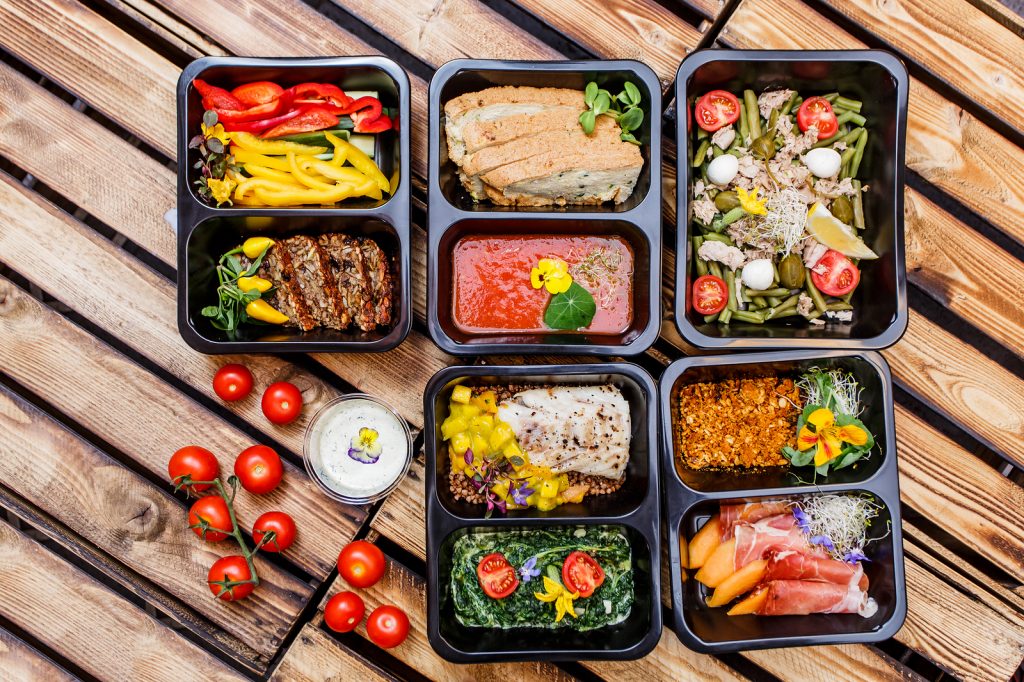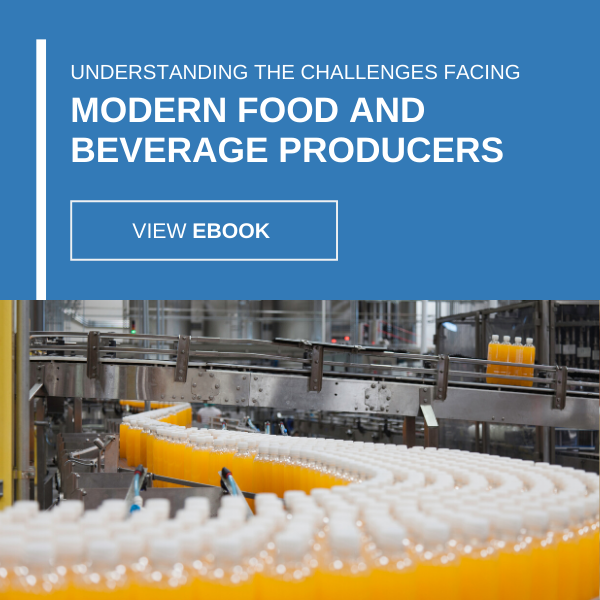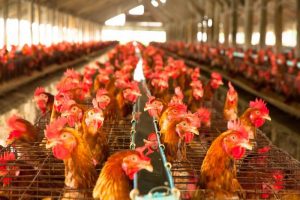-
Subscribe to Blog:
SEARCH THE BLOG
CATEGORIES
- Aerospace
- Asset Maintenance
- Automotive
- Blog
- Building Products
- Case Studies
- Chemical Processing
- Consulting
- Food & Beverage
- Forestry Products
- Hospitals & Healthcare
- Knowledge Transfer
- Lean Manufacturing
- Life Sciences
- Logistics
- Manufacturing
- Material Utilization
- Metals
- Mining
- News
- Office Politics
- Oil & Gas
- Plastics
- Private Equity
- Process Improvement
- Project Management
- Spend Management
- Supply Chain
- Uncategorized
- Utilities
- Whitepapers
BLOG ARCHIVES
- July 2024 (4)
- June 2024 (3)
- May 2024 (3)
- April 2024 (4)
- March 2024 (3)
- February 2024 (4)
- January 2024 (5)
- December 2023 (2)
- November 2023 (1)
- October 2023 (6)
- September 2023 (3)
- August 2023 (4)
- July 2023 (2)
- June 2023 (3)
- May 2023 (7)
- April 2023 (3)
- March 2023 (3)
- February 2023 (5)
- January 2023 (6)
- December 2022 (2)
- November 2022 (5)
- October 2022 (5)
- September 2022 (5)
- August 2022 (6)
- July 2022 (3)
- June 2022 (4)
- May 2022 (5)
- April 2022 (3)
- March 2022 (5)
- February 2022 (4)
- January 2022 (7)
- December 2021 (3)
- November 2021 (5)
- October 2021 (3)
- September 2021 (2)
- August 2021 (6)
- July 2021 (2)
- June 2021 (10)
- May 2021 (4)
- April 2021 (5)
- March 2021 (5)
- February 2021 (3)
- January 2021 (4)
- December 2020 (3)
- November 2020 (3)
- October 2020 (3)
- September 2020 (3)
- August 2020 (4)
- July 2020 (3)
- June 2020 (5)
- May 2020 (3)
- April 2020 (3)
- March 2020 (4)
- February 2020 (4)
- January 2020 (4)
- December 2019 (3)
- November 2019 (2)
- October 2019 (4)
- September 2019 (2)
- August 2019 (4)
- July 2019 (3)
- June 2019 (4)
- May 2019 (2)
- April 2019 (4)
- March 2019 (4)
- February 2019 (5)
- January 2019 (5)
- December 2018 (2)
- November 2018 (2)
- October 2018 (5)
- September 2018 (4)
- August 2018 (3)
- July 2018 (2)
- June 2018 (4)
- May 2018 (3)
- April 2018 (3)
- March 2018 (2)
- February 2018 (2)
- January 2018 (1)
- December 2017 (1)
- November 2017 (2)
- October 2017 (2)
- September 2017 (1)
- August 2017 (2)
- July 2017 (2)
- June 2017 (1)
- April 2017 (3)
- March 2017 (3)
- February 2017 (2)
- January 2017 (2)
- December 2016 (2)
- November 2016 (4)
- October 2016 (4)
- September 2016 (3)
- August 2016 (6)
- July 2016 (4)
- June 2016 (4)
- May 2016 (1)
- April 2016 (3)
- March 2016 (4)
- February 2016 (2)
- January 2016 (4)
- December 2015 (3)
- November 2015 (3)
- October 2015 (1)
- September 2015 (1)
- August 2015 (4)
- July 2015 (6)
- June 2015 (4)
- May 2015 (7)
- April 2015 (6)
- March 2015 (6)
- February 2015 (4)
- January 2015 (3)
CONNECT WITH US
Tag Archives: Food Safety
The food and beverage industry is vast, with both online and offline supply chains. This industry includes companies that work in processing raw food materials, those involved in packaging and distributing prepared foods, organizations that manufacture and distribute alcoholic and non-alcoholic beverages, restaurants and cafes, and general retailers — amongst many others.
Apart from dine-in restaurants and bars, a lot of food-related businesses are categorized as essential services, which means that they have to keep running even during a global pandemic such as the one we face today. However, to do so effectively, stringent safety measures must be followed, thereby limiting the exposure of customers and employees at all stages of production, distribution, and consumption.
Present Conditions in the Food and Beverage Sector
With the COVID-19 outbreak, most restaurants and cafes across the world are shut down. Small eateries and local diners are struggling to stay economically afloat in these tough times. To put things in perspective, recent statistics released by the Bureau of Labor Statistics found that “Employment in leisure and hospitality fell by 459,000, mainly in food services and drinking places.” At the same time, both grocery stores and food manufacturing companies like Coca-Cola, Dominos, and McDonald’s are facing disruptions in their supply chains, resulting in delays in the supply of raw materials. This is especially true for organizations that have suppliers in China.
On the other hand, online food sales and related-services are still up and running, in an ever-increased capacity. Due to this, large corporations that provide food delivery services like Amazon, Walmart, and Kroger are expected to reap huge profits. In fact, this article by S&PGlobal estimates that online buying of food and beverages in the US is expected to reach $38.16 billion by 2023! These trends are seen in other parts of the world, too. For instance, in February, South Korea saw an increase of 92.5% in the online sale of food products. This was the month in which COVID-19 infections were at their peak in the country. Similarly, there is a surge in online buying of non-perishable food items in Singapore — one that is expected to last even after the pandemic subsides.
These uncertain and ever-changing conditions have forced restaurant owners to get creative in order to stay afloat. In addition to options such as deliveries and takeouts, restaurants are turning their dining halls into grocery stores, steakhouses are being turned into butcher shops, and many fancy restaurants are hosting online cocktail-making tutorials.

Government Regulations and Legal Requirements
Price gouging is a common feature during emergency situations such as a global pandemic. Price gouging involves charging inordinate prices for necessities that see a high demand during such times. Most state and federal governments have declared this illegal and have implemented policies to protect customers and small retailers. State laws against price gouging also make provisions to ensure that consumers’ and suppliers’ needs are met.
Food and beverage businesses should also consider asking for subsidies to keep up the supply of essentials during a pandemic. For instance, the flour industry in Pakistan has requested the government to cut taxes or issue subsidies for items required to run the mills.
Businesses in the food and beverage sector need to be aware of the new local and federal requirements to protect themselves from litigation charges and/or bankruptcy. Gloves.com provides guidance procedures to help protect you and your employees and maintain a healthy and safe work environment. In order to ensure maximum safety, employees must be asked about their health before each shift, and all protocols regarding food handling and food safety must be strictly followed. Other important safety measures include maintaining safe distance at takeaways, non-contact delivery of eatables, and covering employment claims.
Tips to Adapt
Food manufacturers need to adapt to the current situation and meet new patterns of demand. Tips to do so include:
- Risk awareness: Grocery stores are places of high risk, yet, frequenting them is necessary. It is thus important to make customers aware of the potential risks of shopping at stores, as well as demonstrate what is being done to combat these risks. This is essential to retain customer trust, as well as reduce the spread of panic.
- Clear and constant communication: Organizations in the food and beverage sector should keep all involved employees up-to-date about operational challenges as a result of COVID-19. Doing so helps manage employee expectations, and being in-the-know helps employees retain some peace-of-mind through this uncertain time. Even though workers cannot interact face-to-face, staying abreast of organizational activities helps employees feel involved and is likely to boost morale.
- Stringent in-store sanitation policies: This goes without saying, but any in-person food and beverage related business must implement strict sanitation measures. Grocery stores are one of the most common places one can get sick, even during normal non-pandemic times. With this in mind, all in-store workers must be encouraged to wash or sanitize their hands frequently and refrain from touching their face during work hours. They can also wear latex gloves to decrease the chances of contagion. Shelves, knobs, switches, handles, refrigerator doors, computer hardware, and countertops must be regularly disinfected. The various parts of shopping carts can also contain germs passed from one customer to another and must be disinfected after each use. To ensure this is done, grocery stores can provide out anti-bacterial wipes to wipe down carts before customers use them and instruct them to maintain a safe distance from the checkout counters.
There is much uncertainty with regards to the food and beverage industry in the time of COVID-19. One thing, however, is for sure: there is a strong need to meet consumers’ demand for quality and convenience. With a global crisis that is wreaking havoc in many countries, consumers are increasingly cautious about the quality of their food. Food manufacturers and organizations involved in retail and supply are thus obliged to adhere to sanitary measures to protect customers and employees, and at the same time invent creative ways to stay in business.
As the food and beverage sector evolves everyday to the changing demands, having a partner to adapt processes in operations and the supply chain could be the difference in survival or demise. USC Consulting Group can assist in enabling rapid acceleration of performance to meet demand. Learn more about USC’s capabilities in the eBook: Understanding the Challenges Facing Modern Food & Beverage Producers.
This article is written by guest author Beau Peters. View more of Beau’s articles here.
The global food and beverage industry is poised for significant growth in 2019. Total revenues in the space are expected to surpass $1 trillion this year, while market penetration is forecasted to increase by more than one percentage point, according to data analysis from Statista. In short, businesses navigating the food and beverage arena have much to be excited about as the first quarter starts. However, a number of serious sector-specific shifts may complicate this sunny economic outlook. Food and beverage firms must therefore gain an understanding of burgeoning developments and make the operational adjustments necessary to finding success amidst change.
Here are three key trends sweeping the industry in 2019:
1. Plant protein gains steam
Vegan and vegetarian products have moved from the fringes of the food and beverage space to the mainstream. While the vegan and vegetarian populations have remained relatively stable – in the U.S., for instance, just 3 percent of adults say they are vegans and only 5 percent call themselves vegetarians, according to research from Gallup – more people worldwide are incorporating the specialty foods associated with these lifestyles into their everyday diets, The Economist reported. This is especially true for consumers in wealthy nations, where food and beverage businesses of all kinds, from fast sellers to grocers, are building out their vegan and vegetarian options. This development has generated great demand for plant-based protein, analysts for Nielsen found. An estimated 23 percent of eaters worldwide want more plant proteins, including almost 40 percent of Americans and 43 percent of Canadians.
For this reason, food and beverage giants such as General Mills, PepsiCo, and Tyson have made significant investments in plant protein production efforts and will continue to do so over the coming year as demand rises, according to a report from CBI Insights. At the moment, the global market for plant protein-based items stands at $11 billion with ample room for growth, the market research firm discovered. The businesses on the outside looking in on this trend would be wise to cultivate new production lines to accommodate the expanding number of consumers here and abroad demanding vegan and vegetarian products.
2. Direct-to-consumer becomes key
Food and beverage manufacturers have long relied on retailers to stock and sell their products. While this model continues to be the industry standard, a major marketplace force is testing its viability: the emergence of the private label. Traditional grocers such as Walmart and Target have cultivated high-quality, low-cost in-house offerings that they position as alternatives to brand-name products. Such items are extremely appealing to consumers, virtually all of whom prioritize both quality and value above all else. In fact, private labels products are already outperforming their branded counterparts, according to Nielsen. That said, longstanding food and beverage manufacturers are fighting back by attempting to eat up grocer market share via direct-to-consumer initiatives, CBI Insights discovered.
Big brands such as Ben and Jerry’s, the Campbell Soup Company, and the Coca-Cola Company have launched formalized D2C programs, transforming their static websites into online shopping portals where customers can order their favorite foods and beverages without visiting the supermarket, Grocery Dive reported. This approach will become necessary in 2019 as more retailers roll out private labels and expand existing offerings, which consumers already believe are on par with branded lines, per Nielsen. However, the food and beverage businesses that embrace D2C should know such a change will cause significant internal disruption, as partners become marketplace adversaries – a paradigm shift that upsets supply chain operations, according to Food Logistics.
3. Cannabis-based food enters the mainstream
Today, adults in 10 U.S. states and the District of Columbia can use marijuana recreationally. The widespread legalization of the substance, which began in 2012 when voters in Colorado and Washington D.C. passed the first marijuana decriminalization measures, has created a healthy niche market for cannabis products in the U.S., analysts for Grand View Research discovered. The space is expanding at an immense compound annual growth rate of almost 35 percent and is poised to top $146 billion by 2025. Edibles, or cannabis-infused food and beverage items, are among the most popular marijuana products within this growing market, according to Technavio. American consumers spent more than $16 billion on these items in 2018, accounting for 75 percent of the global market, which totaled more than $21 billion last year.
Another growing trend that has caught wind in its sails is the movement of products containing cannabidiol, or CBD — a compound derived from cannabis. Innovators in the market, such as TONIC CBD, are creating unique ways to consume the product that provides natural benefits, as per Newsday. Consumers can choose from ingestibles to inhalants and sublinguals (under the tongue). Use of CBD has gained so much traction that there are even treats for your dog that contain the oil.
This food and beverage arena is expected to continue moving forward in 2019, as buyers in states where cannabis has been decriminalized set aside more money for edibles and new consumers enter the fray due to additional developments in legalization. Last year, 21 states put forth ballot measures aimed at legalizing marijuana, with six of these pieces of legislation passing. With 62 percent of Americans in favor of legalization, similar measures are bound to materialize in 2019, according to Pew Research Center. Of course, this data does not take into account the international market, which added Canada in 2018 due to a nationwide legalization effort. Businesses in the food and beverage space must reckon with this development and decide whether they wish to enter this growing yet controversial space.
As food and beverage manufacturers grapple with these major developments over the next year, they may find themselves in need of external assistance. USC Consulting Group can help. We have been working with organizations in the food and beverage industry for more than five decades, helping them transform their operations and adapt to marketplace shifts of all kinds.
Connect with us today to learn more about our experience and how we can help your firm adjust to these and other food and beverage trends.
The food and beverage space continues to evolve in response to consumer demand, production innovation, and resource availability. Numerous sea changes are poised to unfold in 2018, nearly all of which will affect producers’ bottom lines. Here are some of the impactful trends taking hold within the food and beverage arena over the next several months:
Cellular agriculture
In recent years, food and beverage makers have embraced unorthodox production methods in an effort to engage increasingly conscious customers who not only demand healthy, all-natural food products but also prefer vendors that use sustainable processes.
In June 2017, the market intelligence firm Ipsos Research collaborated with Coast Packaging Company to conduct a nationwide study on consumer attitudes toward sustainability in the food and beverage sector. Approximately 42 percent of respondents attested to caring about “minimally processed” food items more than they did five years earlier, while more than one-quarter expressed interest in producers whose methods reduce food wastage.
These attitudes have forced producers to re-evaluate their workflows and have led to the creation of experimental food production methods, the most notable being cellular agriculture. This strategy involves engineering products in laboratories via cutting-edge bioengineering and tissue-engineering techniques that enable the creation and manipulation of cell cultures. Innovators in the space have been able to “harvest” virtually every food product using cellular agriculture, including animal products such as meat, dairy, and eggs, along with vegetables, according to Quartz. Early successes show the methodology holds transformative potential in an environment where available agricultural land continues to shrink, according to the Food and Agriculture Organization of the United Nations. Of course, cellular agriculture also opens the door to increased sustainability, allowing producers in the U.S. to take pressure off the more than 408,000 hectares of land they currently control and produce their products within controlled laboratories, according to the Organization for Economic Cooperation and Development.
However, brands have yet to convince consumers to embrace products created through cellular engineering. Messaging surrounding the topic will take shape throughout 2018, as advocates attempt to promote the natural roots of the process while opponents fight back by labeling the resulting food items “lab-grown.” Should the former group win the marketing battle, producers could find themselves making room in the budget for investments in cellular agriculture.
Food safety
Consumers weathered multiple food safety breakdowns last year and are currently under threat from an international E. coli outbreak linked to tainted romaine lettuce, according to the Centers for Disease Control and Prevention. The bacteria-ridden vegetable has sickened more than 180 people across Canada and the U.S., and caused two deaths. This is not uncharted territory. Last year, the CDC conducted eight large-scale investigations addressing bacterial outbreaks related to food production.
These very public food safety problems have put consumers on edge. Chipotle’s recent struggles evidence increased public awareness of such issues. The restaurant chain suffered a massive E. coli outbreak during the fourth quarter of 2015 and has yet to re-establish its footing in the marketplace, despite mitigating the immediate problem in February 2016, instituting new quality control methods and investing in an aggressive rebranding campaign, CNN reported. In short, consumers are not as willing to trust food and beverage brands with black marks on their safety records, no matter what post-outbreak changes are made.
Food and beverage firms must keep this in mind as they navigate the market in 2018. They must ensure their safety processes and fail-safes are in place and compliant with modern production standards. A single slip-up could wreak long-term budgetary havoc.
Changing regulatory tides
A number of federal authorities have signaled that various regulatory changes affecting the food and beverage space could unfold in 2018, the most prominent being the U.S. Department of Agriculture’s potential repeal of the Organic Livestock and Poultry Practices proposed final rule, according to Lexology. On Dec. 18, the agency published an external communication requesting public comment on new guidance that would withdraw the rule, which would require organic livestock companies to refine their handling and slaughter methods to make them more animal-friendly. The OLPP was scheduled to go into effect March 30, 2018, but the USDA has since pushed the implementation date back to May 14. However, the agency is unlikely to allow the rule to take effect.
Farmers are divided on the decision. While some appreciate the USDA’s push to reduce regulations, others are concerned that lowering standards for animal welfare will anger customers, an increasingly large number of whom consider ethical farming practices paramount.
In addition to grappling with the recent OLPP decision, food and beverage producers are still digesting the U.S. Food and Drug Administration’s decision to discontinue the Food Advisory Committee. The group, established in 1992, dissected national nutrition and food safety trends, until Dec. 12 when the FDA announced that it was not renewing its charter. The agency cited inactivity – the FAC had not held an official meeting since 2015 – as the impetus behind the move.
Eight days after the FDA publicized its decision, a group of more than 10 public interest groups and seven former FAC members sent a letter to the agency asking it to reactivate the panel, Lexology reported. The FDA has yet to respond.
These developments signal a loosening of federal food and beverage production regulations, possibly laying the groundwork for higher revenues. That said, this approach could also increase operational risk, as producers working without strong guidelines in mind may end up rolling out substandard product that disappoints or, even worse, sickens food-savvy consumers.
With these developments in play, businesses in the food and beverage industry must re-evaluate their back-end and front-end operations to assess their respective levels of preparedness. Firms that need external assistance to effectively undertake these activities should consider connecting with USC Consulting Group. Our management experts can help food and beverage producers of all sizes adjust to the current marketplace and future-proof their operations for tomorrow.








